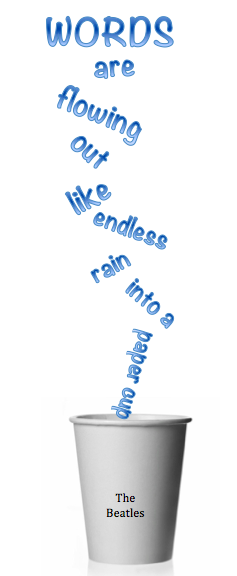Take the “freewheeling” out of freewriting and get kids writing about their learning.
Freewriting is a routine that writers use to get their creative juices flowing. The idea is to write for a specified period of time without stopping, correcting, backtracking or even lifting the pen from the paper (or the fingers from the keyboard, as the case may be). Don’t worry about spelling or sentences and if you can’t think of anything, just write the same word over and over again until an inspiration hits you. What an invitation to the middle school writer who just can’t resist testing the rules and handing in a full page of “I don’t know what to write.”

Here’s an alternative to freewriting that includes both freedom and accountability and is intended to get kids recording their knowledge about current topics of study in content area subjects. It’s a bit like interval training in the gym, where you go like crazy for 50 seconds and recover for 10, then repeat and repeat.
Assign a topic of study: icebergs, ancient civilizations, the Olympics, or any content area focus. (You might even give the students 60 seconds to talk to a partner before they write.) Tell the students that this is their opportunity to pour their ideas onto the page or screen, without worrying about spelling or punctuation, as long as they can read it. They don’t go back and correct or change information, but keep writing.
Set the timer for a short time, such as one minute. Start with a time that’s long enough to get going but short enough to prevent writers from running out of ideas before the time is up. Saying “I don’t know what to write” isn’t an option because they are writing words and groups of words related to a topic they should know something about.
When the timer sounds, writers must stop writing, even if they’re in the middle of a word. Give them 30 seconds or so to “recover” – or reflect on what they’ve written and what they might write next.
Set the timer again and repeat the process. You might want to extend the time a little, depending on the tolerance of your students for writing. Try to go through at least three cycles for students to generate all their knowledge.
CLASSROOM APPLICATIONS
- Use the freewrite as an exit slip – a quick assessment of learning at the end of the class.
- Use the freewrite as notes for summarizing the content of the class.
- Use the freewrite as a prewriting task. Have students turn their freewriting notes into a connected piece of writing.
- Use the freewrite to build confidence and fluency. Have students count the number of words they write at the end of each timed writing.
- Use the freewrite to summarize a reading passage, analyze a character or evaluate a text.
- Try “looping.” Have students circle a word or phrase in their freewrite to use as the topic for the next freewrite.
FOUR RULES OF FREEWRITING
- You can’t not write. Even if you can’t think of anything related to the topic (and you will be able to, of course), write about anything at all. Don’t lift your pen from the paper (or your fingers from the keyboard) until the time is up.
- Forward motion only. Don’t go back and erase, cross out or change what you’ve written. Don’t even take time to reread. You can do that when the time is up.
- Piggyback on ideas that you’ve already written
- Chill out on conventions. If you want to use punctuation, do. If you don’t want to, don’t. Spell words as well as you can, as long as you can read them. Write long sentences or short sentences or no sentences at all. The main point is freeflowing ideas.

